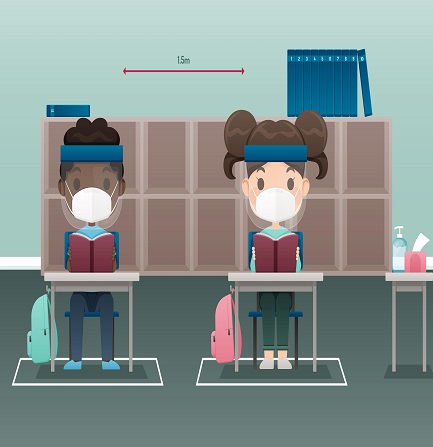Introduction:
In recent years, the landscape of education has undergone a significant transformation. The COVID-19 pandemic has accelerated the adoption of remote education, making it a pervasive alternative to traditional in-person learning. While remote education offers numerous advantages, it also presents its fair share of challenges. In this blog, we will explore some of the key hurdles faced by students, educators, and institutions in the realm of remote education.
Technological Limitations: One of the primary obstacles to remote education lies in the availability and accessibility of technology. Not all students have equal access to reliable internet connections, computers, or other necessary devices. This digital divide exacerbates existing inequalities in education and creates a disadvantage for students from economically disadvantaged backgrounds. Bridging this technological gap is crucial to ensure equitable access to education.
Lack of Personal Interaction: Traditional classrooms foster a sense of community, collaboration, and personal interaction among students and teachers. Remote education, on the other hand, often lacks the same level of interpersonal engagement. Students may find it challenging to connect with their peers and instructors, leading to a sense of isolation and reduced motivation. Building effective virtual communities, encouraging online discussions, and utilizing interactive tools can help address this challenge.
Self-Discipline and Time Management: Remote education demands a high level of self-discipline and time management skills from students. The absence of a physical classroom and fixed schedules requires learners to be self-motivated and proactive in managing their study routines. Many students struggle with maintaining focus, avoiding distractions, and meeting deadlines in this flexible learning environment. Developing effective time management strategies and setting realistic goals can alleviate these challenges.
Adaptation to New Learning Formats: Remote education often relies on different learning formats, such as pre-recorded lectures, online discussion forums, or virtual assignments. This shift from traditional face-to-face instruction requires students to adapt to new modes of learning and develop independent study skills. Some students may face difficulties in adjusting to these changes, especially those who thrive in hands-on or interactive learning environments. Offering additional support, clear instructions, and varied instructional methods can aid in the transition.
Limited Access to Resources: Physical libraries, laboratories, and other educational facilities play a crucial role in learning. However, remote education may limit students' access to these resources, hindering their ability to conduct research, perform experiments, or gain practical knowledge. Institutions must explore innovative solutions, such as virtual laboratories or digital libraries, to bridge this gap and ensure students have access to essential resources.
Assessing Learning Outcomes: Evaluating student performance and ensuring a fair assessment process is another challenge in remote education. Traditional exams or in-person assessments may not be feasible in remote settings, requiring educators to develop alternative evaluation methods. Striking a balance between online quizzes, projects, and interactive assessments can help gauge students' understanding while maintaining academic integrity.
Advantages of Navigating the Challenges of Remote Education:
-
Flexibility: Remote education allows learners to create their own schedules and study at their own pace. This flexibility is particularly beneficial for students who have other commitments, such as part-time jobs or family responsibilities.
-
Access to a Wide Range of Courses: Remote education allows students to access a diverse range of courses, even if they are not available locally. This opens up opportunities for learners to explore niche subjects and pursue their interests beyond what is traditionally offered in their geographical area.
-
Cost-Effectiveness: Remote education often eliminates the need for commuting or relocating to attend a physical institution, reducing expenses associated with travel, accommodation, and campus facilities. This can make education more affordable for many students, especially those from economically disadvantaged backgrounds.
-
Increased Collaboration and Networking: Remote education encourages collaboration and networking opportunities with students and professionals from diverse backgrounds and locations. Virtual classrooms, online discussion forums, and group projects facilitate interaction, enabling students to broaden their perspectives and build global networks.
-
Personalized Learning: Remote education platforms often provide personalized learning experiences through adaptive learning technologies and data-driven insights. Students can receive tailored recommendations, individualized feedback, and targeted resources that cater to their specific learning needs and preferences.
Disadvantages of Navigating the Challenges of Remote Education:
-
Limited Social Interaction: Remote education may lack the social environment and in-person interactions that are inherent in traditional classrooms. This can lead to feelings of isolation, reduced peer-to-peer collaboration, and a sense of disconnection from the learning community.
-
Technological Challenges: Remote education heavily relies on technology, making it susceptible to technical issues such as internet connectivity problems, software glitches, or hardware limitations. These technological challenges can disrupt the learning process and create frustrations for both students and educators.
-
Self-Motivation and Discipline: Remote education requires students to be self-motivated and disciplined to stay on track with their studies. Without the physical presence of instructors or classmates, some students may struggle to maintain focus, manage their time effectively, and stay motivated throughout the learning journey.
-
Lack of Hands-On Experience: Certain fields of study, such as science, engineering, or performing arts, often require hands-on experience and practical training. Remote education may limit students' access to laboratories, workshops, or equipment, making it challenging to gain the necessary practical skills and experiences.
-
Limited Networking Opportunities: While remote education enables networking on a global scale, it may lack the same level of in-person networking opportunities that physical campuses offer. Building personal connections, participating in extracurricular activities, and accessing mentorship programs may be more challenging in a remote learning environment.
Conclusion:
Remote education has emerged as a transformative solution, offering flexible learning opportunities and reaching students across geographical boundaries. However, the challenges it presents cannot be overlooked. To overcome the hurdles of remote education, collaboration between institutions, policymakers, educators, and students is crucial. By addressing issues related to technology, interaction, self-discipline, adaptation, resource accessibility, and assessment, we can unlock the full potential of remote education and create an inclusive and effective learning environment for all.




















 website development.png)












0 Comments
No comment